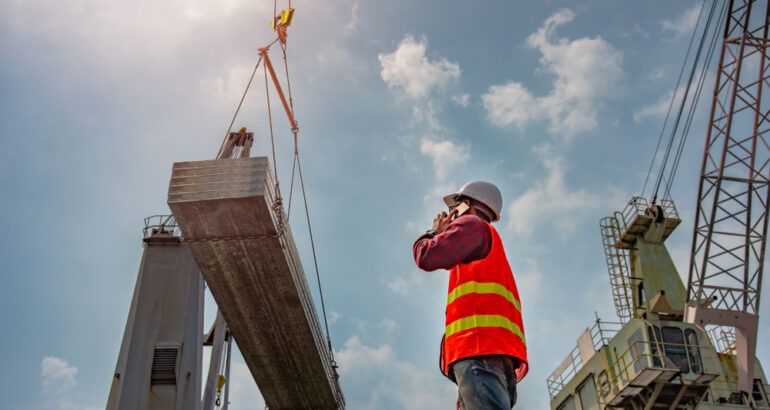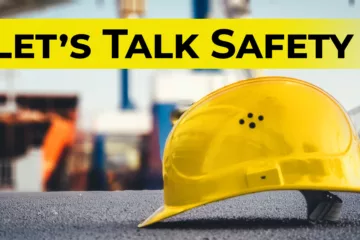Let’s Talk Safety
A lash barge is moored to the dock and a crew of longshoremen is loading bags of grain (corn-soy blend) into the barge. The crew consists of a crane operator, a forklift operator, one laborer working on the loading dock, and five laborers working inside the barge positioning the cargo. The operation is supervised by a superintendent and the crew foreman.
A 15-ton bridge crane, equipped with a 2,500-pound I-beam spreader bar, is used to transfer the bags of grain from the dock into the barge. The spreader bar is constructed of 3/8-inch plated steel and is 18.5 ft long and 21 inches high. It is rigged with eight wire ropes, which are each eight feet long and fitted with hooks. The forklift operator places the 55-pound bags of grain onto the dock, where they are stacked in groups of 40 bags and secured in synthetic slings. The synthetic slings around each stack are then hooked to the wire ropes on the crane’s spreader bar, and the crane loads eight stacks at one time into the barge. Each load contains a total of 320 bags and weighs 17,636 pounds. Once the stacks are placed in the barge, the crew in the hold removes the synthetic slings around the stacks, first unfastening the snaps on the synthetic slings and then reattaching the slings to the crane’s spreader bar hooks on just one side. The crane operator then raises the hoist, and the synthetic slings are pulled away from the cargo.
One set of synthetic slings had been successfully removed from a stack and three of the laborers in the barge were setting up the spreader bar to remove another set of slings. The laborers were rehooking the synthetic slings to the spreader bar when the spreader bar fell from the crane’s hoist. The spreader bar landed on top of one laborer and struck a second laborer in the head and torso as he attempted to run out of the way. Both employees struck by the spreader bar were killed. The third longshoreman was able to move out of the way of the spreader bar and was not injured.
What went wrong
The crane had not been subjected to daily or monthly inspections. No designated individual conducted inspections of the crane or the crane’s components. Supervisory accident prevention training was not provided. The investigation revealed that a 5/8-inch wire rope (presumably rigged to the crane) was completely severed and both ends were badly frayed, attributed to progressive wear-and-tear rather than sudden breakage. Additionally, the top of the crane block was damaged and the sheaves on the block were out of alignment.
The company’s safety rules warned the crane operator not to perform lifts over people’s heads, and numerous signs posted at the site warned employees of the dangers of the overhead crane.
Signs indicating telephone numbers of emergency personnel were not posted in a conspicuous location. Additionally, not all of the areas around the barges were protected with safety nets or other fall protection, exposing employees to fall and drowning hazards.
This hazard could have been prevented if employees had not been permitted to work beneath the suspended crane spreader bar. Hooking the cargo slings to the spreader bar should have been performed while the spreader bar was positioned as close to the floor of the barge as possible, rather than suspended above the laborers. Additionally, the hazard could have been prevented if the laborers had moved a safe distance from the spreader bar before the crane operator lifted the hoist to remove the cargo slings
Republished from Marine Construction Magazine Issue V, 2022







